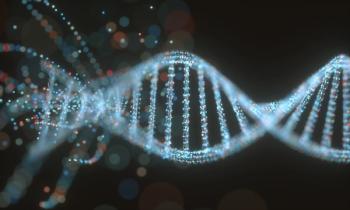
Epigenetic clues in PCOS embryos reveal new pathways for diagnosis
A new study uncovers inherited epigenetic changes in embryos of women with polycystic ovary syndrome, offering insights into early risk detection and future fertility therapies.
There may be a distinctive “epigenetic memory” in embryos of women with polycystic ovary syndrome (PCOS), explaining the genetic link often observed in the condition, according to a recent study presented at the 41st Annual Meeting of the European Society of Human Reproduction and Embryology (ESHRE).1
Disrupted gene marks observed in early embryo development
Disrupted genes were identified in the embryos of participants with PCOS, indicating an impact on early developmental programming. This included influences on H3K27me3, H3K4me3, and H3K9me3, which are crucial histone marks for the control of gene expression.
“Importantly, about half of the abnormal H3K27me3 signatures we saw in Day 3 embryos were already present in the oocyte”, said Qianshu Zhu, PhD, study lead. “This tells us that an epigenetic signal is being passed from mother to embryo before implantation even begins.”
There were 133 patients with PCOS and 95 infertile women without PCOS receiving fertility treatment included in the final analysis. Gene activity and epigenetic changes were both assessed using ultra-low-input sequencing. Epigenetic changes were defined as chemical tags regulating how genes turn on and off without influencing the underlying DNA sequence.
Potential therapeutic intervention identified
Abnormal H3K27me3 levels were decreased using 2 PRC2 inhibitors, EED226 and valemetostat, on affected embryos in vitro. This highlighted a potential method of treating epigenetic imbalances.
Additionally, investigators did not expect H3K27me3 to be an inherited driver of PCOS, as the histone mark is commonly used to assess biology in caner. According to Zhu, this provides new opportunities to evaluate embryos and potentially provide intervention.
Toward improved PCOS diagnosis
Hormone levels and ovarian morphology are currently analyzed when diagnosing PCOS. Researchers noted epigenetic profiling may be used alongside these tools, especially in the case of H3K27me3. This can lead to earlier risk assessment among the offspring of impacted mothers.
H3K27me3 patterns may also be utilized among patients undergoing assisted reproductive technology by identifying the best available embryos to use during in vitro fertilization. This may lead to greater success for infertility treatments. However, long-term impacts on children have not yet been observed, as the embryos used in the study were laboratory-grown.
The team plans to conduct mouse models to knock down the Kdm6a and Kdm6b genes. This will remove H3K27me3, allowing the findings of this trial to be validated by assessing whether mice offspring present with PCOS-like traits.
A step forward in understanding PCOS
According to Karen Sermon, MD, PhD, Chair of ESHRE, the molecular origin of PCOS remains largely unknown. Therefore, these findings allow for improved understanding and provide new treatment opportunities. The results have been published in Human Reproduction, a leading journal in reproductive medicine.
“If we confirm that altering these histone marks changes PCOS traits in the next generation, we’ll have a powerful target for prevention”, said Zhu.
Supporting evidence from endometrial gene mapping
This data is supported by a trial evaluating the composition of cells and gene expression in the uterine lining between women with PCOS vs those without PCOS, published in Nature Medicine in March 2025.2 The genes were evaluated using a cell map developed by studying endometrial tissue samples in women.
Investigators found 7 main cell clusters: stromal cells, smooth muscle cells, epithelial cells, lymphoid and myeloid immune cells, endothelial cells, and lymphatic cells. Epithelial cells were more common in PCOS cases, while stromal and lymphoid cells were less common. This highlighted a map of endometrial alterations among PCOS patients.
“As we identified changes in gene expression in specific cell types, this study provides crucial guidance for developing more targeted treatments for PCOS-related endometrial dysfunction,” said Elisabet Stener-Victorin, MD, professor of reproductive physiology at Karolinska Institutet.
References
- Dysregulated epigenetic memory in early embryos offers new clues to the inheritance of polycystic ovary syndrome (PCOS). European Society of Human Reproduction and Embryology. June 30 2025. Accessed July 7, 2025. https://www.eurekalert.org/news-releases/1088643.
- Krewson C. Study highlights how PCOS alters uterine lining. Contemporary OB/GYN. March 21, 2025. Accessed July 7, 2025. https://www.contemporaryobgyn.net/view/study-highlights-how-pcos-alters-uterine-lining.
Newsletter
Get the latest clinical updates, case studies, and expert commentary in obstetric and gynecologic care. Sign up now to stay informed.











